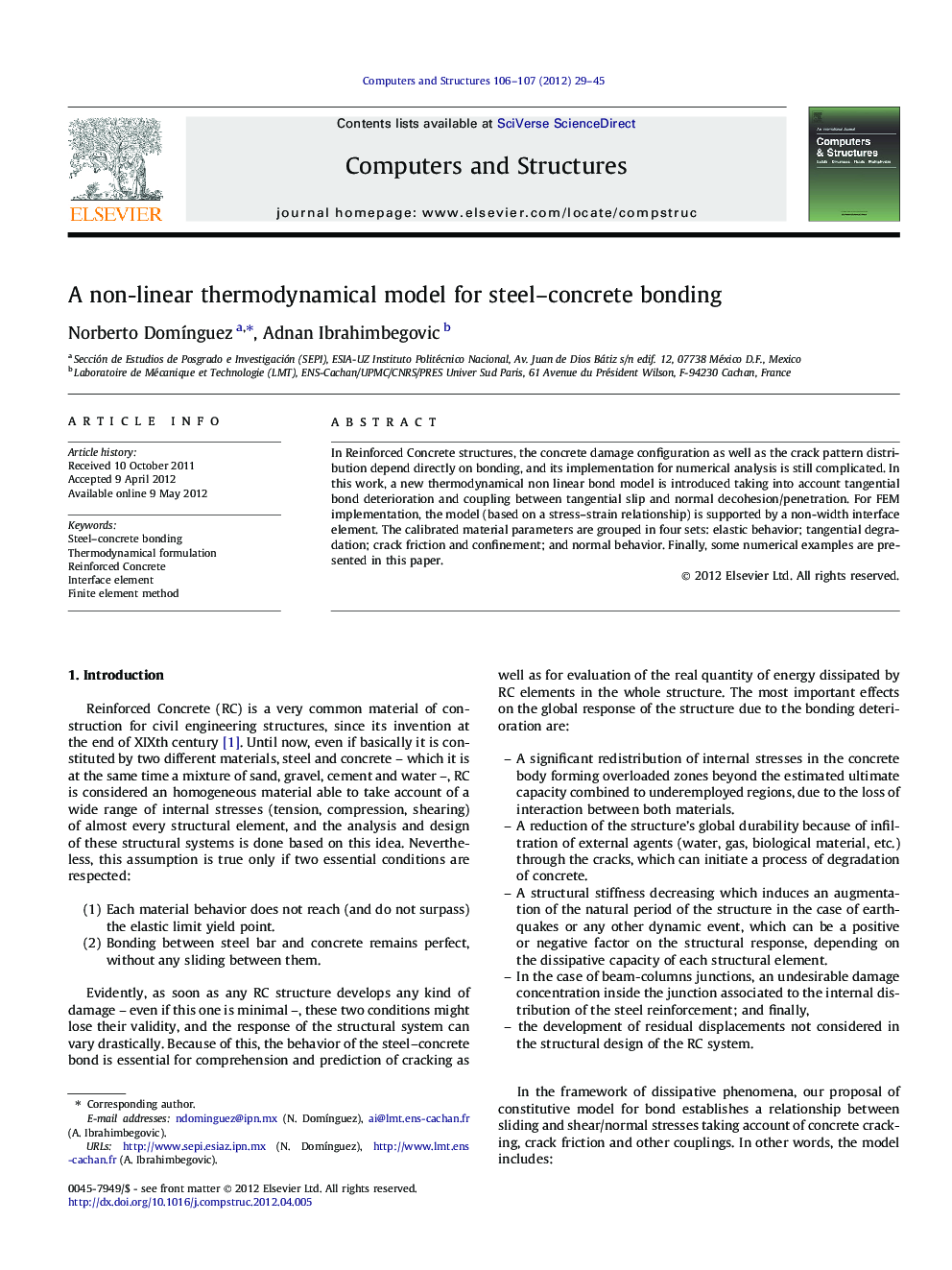| Article ID | Journal | Published Year | Pages | File Type |
|---|---|---|---|---|
| 510134 | Computers & Structures | 2012 | 17 Pages |
In Reinforced Concrete structures, the concrete damage configuration as well as the crack pattern distribution depend directly on bonding, and its implementation for numerical analysis is still complicated. In this work, a new thermodynamical non linear bond model is introduced taking into account tangential bond deterioration and coupling between tangential slip and normal decohesion/penetration. For FEM implementation, the model (based on a stress–strain relationship) is supported by a non-width interface element. The calibrated material parameters are grouped in four sets: elastic behavior; tangential degradation; crack friction and confinement; and normal behavior. Finally, some numerical examples are presented in this paper.
► Development of a new thermodynamical nonlinear model for steel–concrete bonding. ► Coupling between tangential slip and normal decohesion/penetration. ► Inclusion of dissipative effects associated to crack friction and cyclic loading. ► 3-Phases bond behavior: elastic link, interlocking damage, post-coalescence damage. ► Use of non-width interface elements based on classical finite element formulation.
